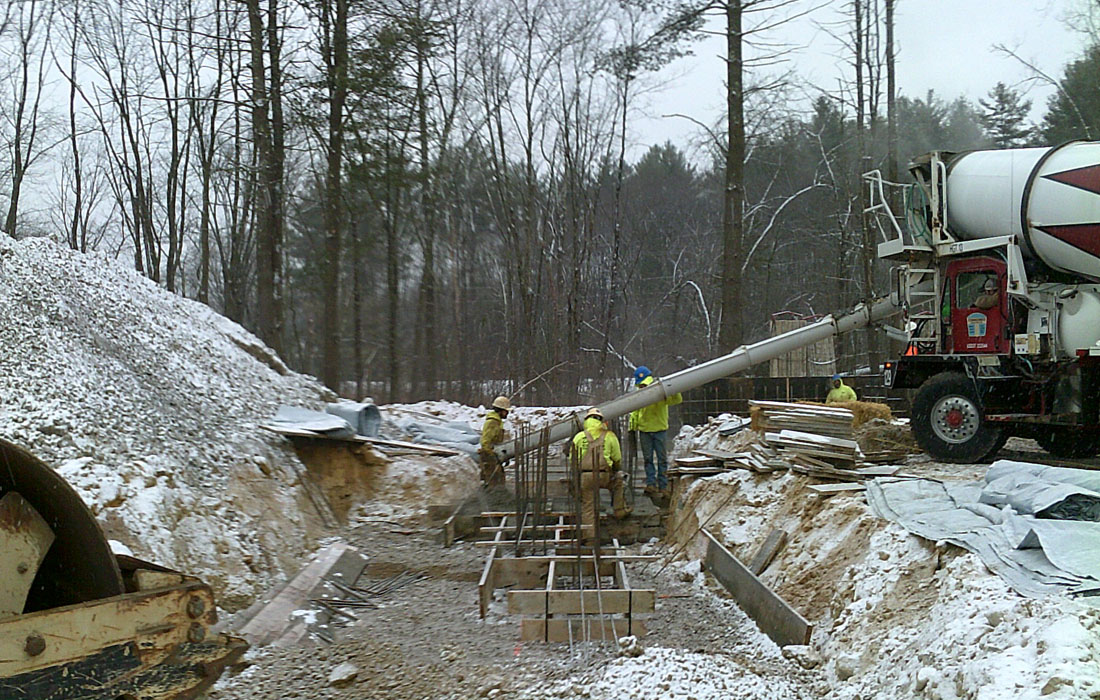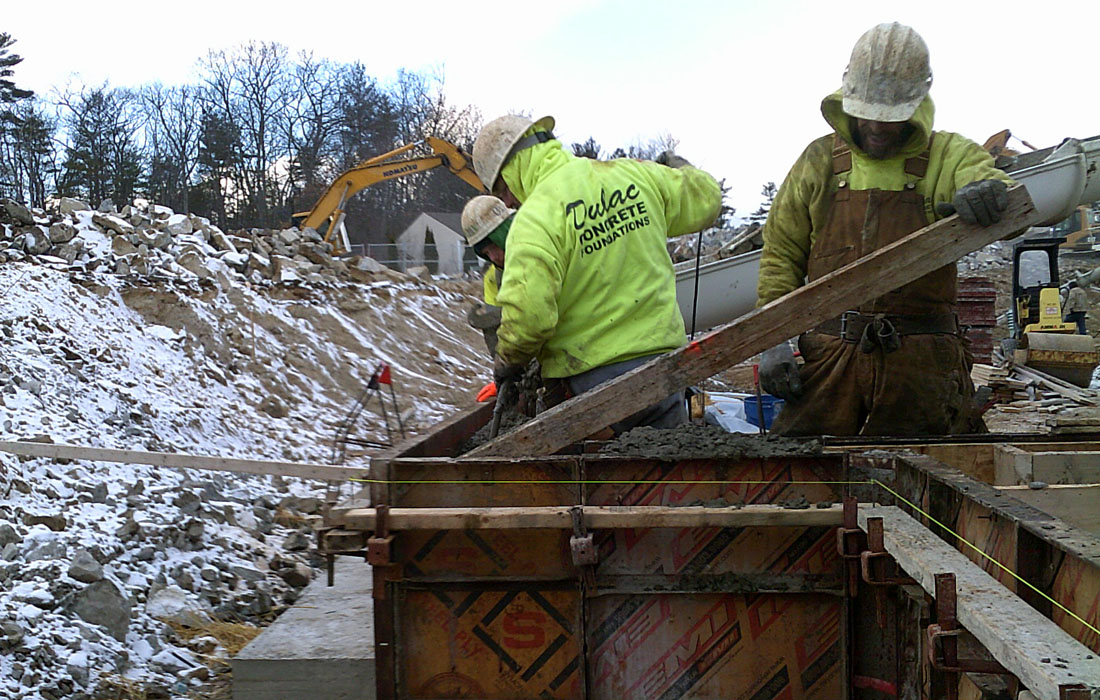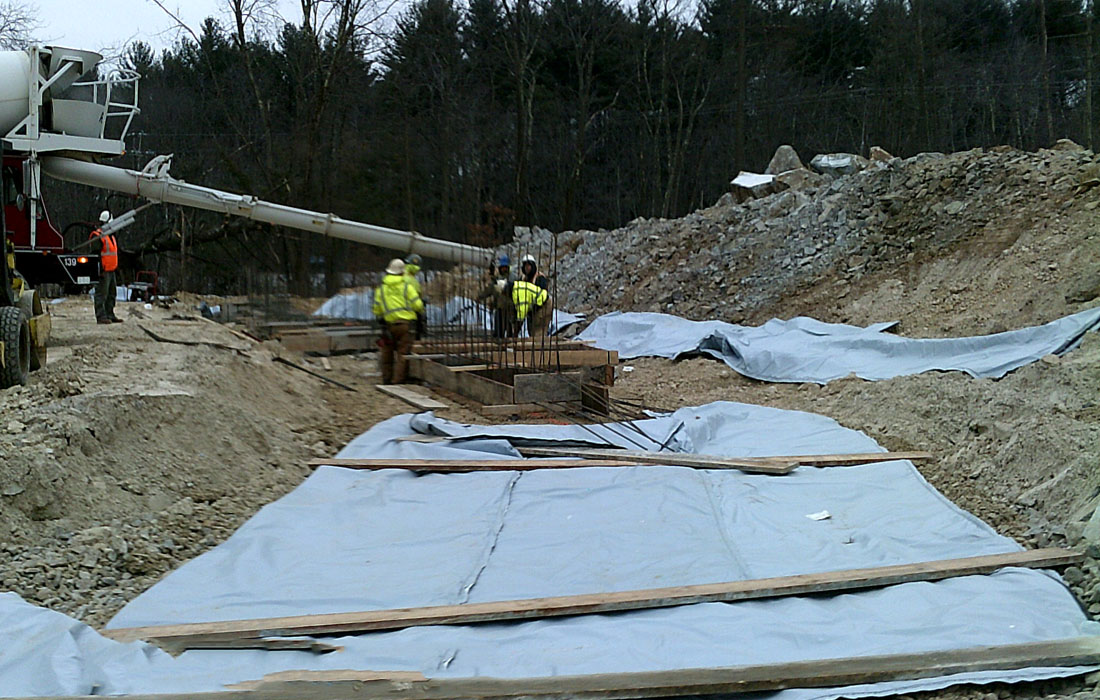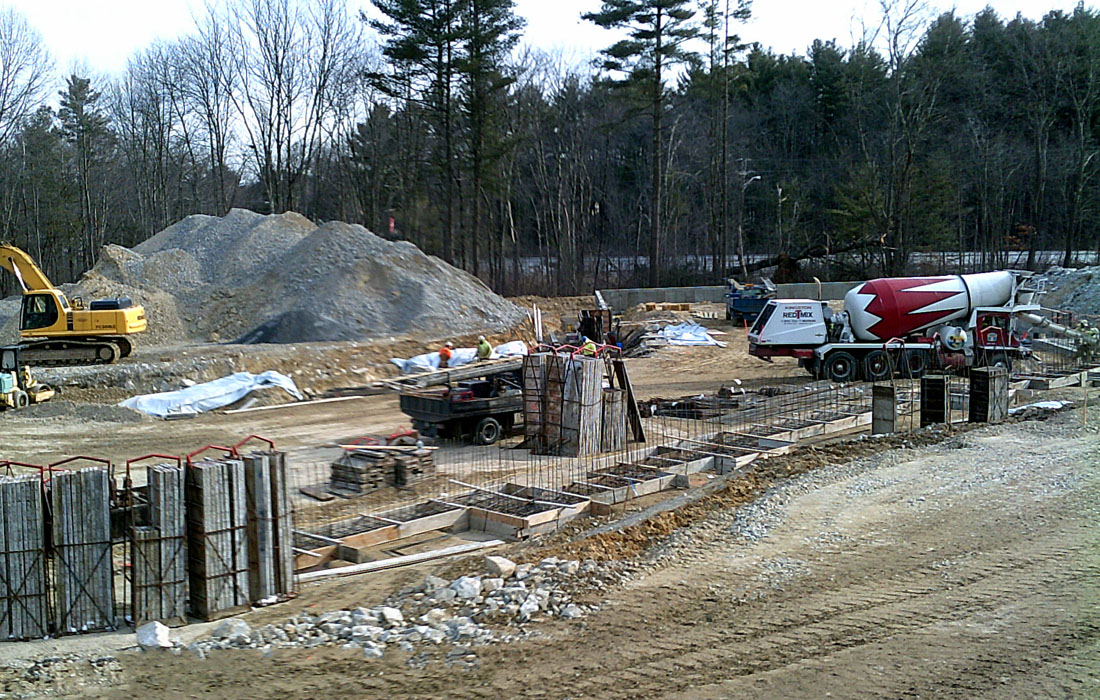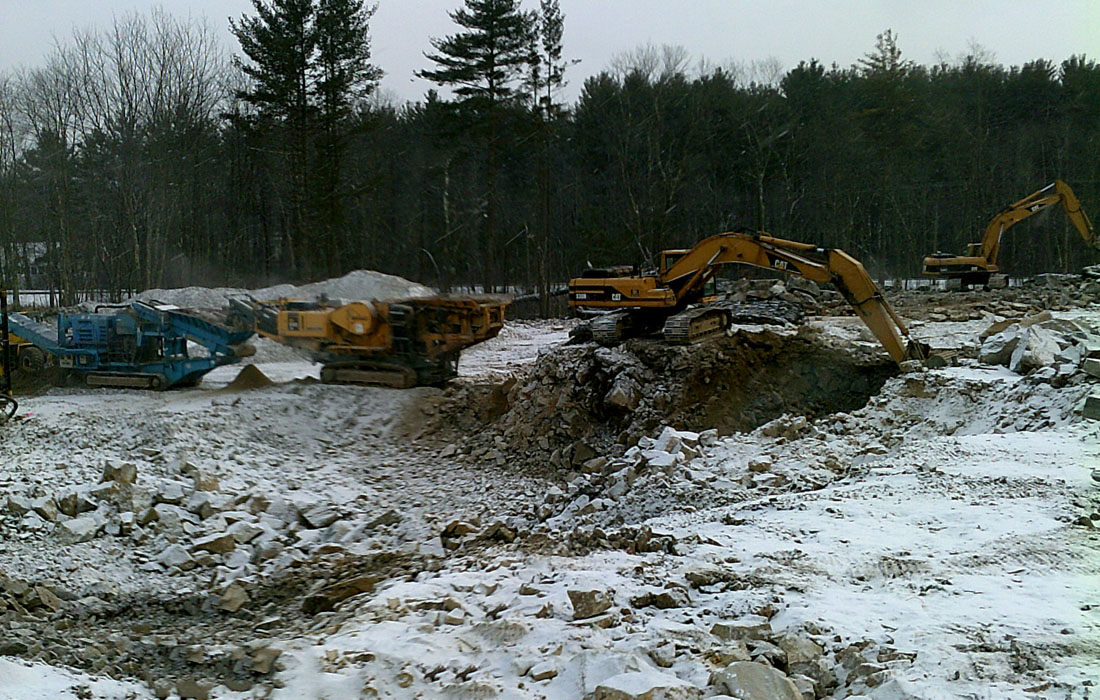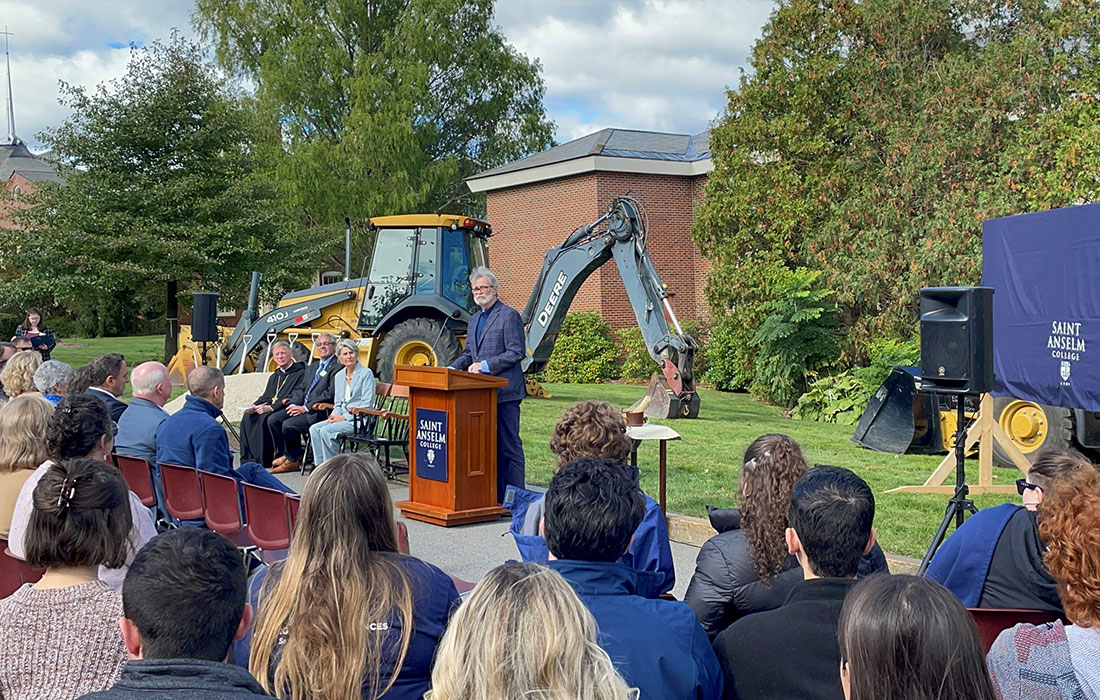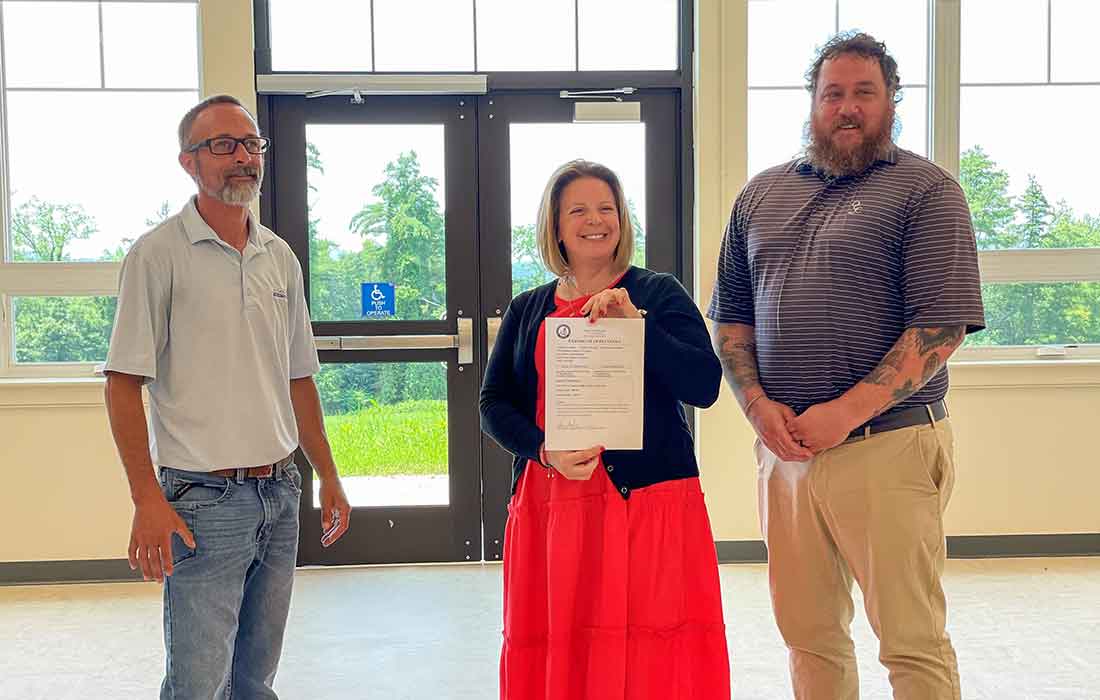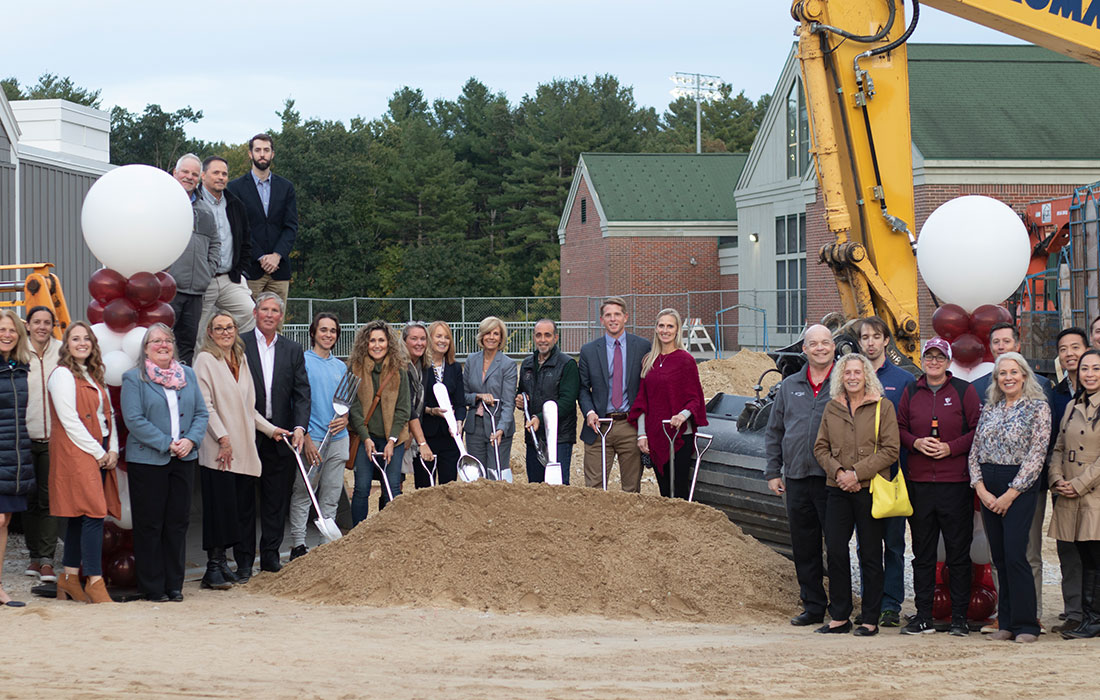Strategies for Placing Foundations during a Bitter New England Winter
Bedford, NH, February 2015 –
Eckman is currently placing concrete foundations at The Residence at Salem Woods jobsite despite recent sub-zero temperatures and the need for frequent snow removal. It is critical that freshly placed concrete foundations, and the ground on which they bear, not be allowed to freeze. The curing process is an active chemical reaction and while the concrete strengthens with time, we go to great lengths to protect it from freezing. Any freezing can be detrimental to the curing process, rendering your concrete defective and causing major delays on your project.
Through a number of strategies including use of portable ground-thaw units, protective insulated blankets and adding chemical accelerators to the concrete mix, our team has been able to forge ahead during this record-setting winter. Our site superintendent monitors concrete temperatures with an infrared reader to ensure a quality installation. The combination of concrete with additives added at the batch plant to accelerate curing along with frigid temperatures create smaller windows for crews to work, so they must be prepared to work quickly and efficiently.
In this piece, we explore winter weather obstacles during preparation and placement of foundations and how your project can overcome the cold.
1. Can You Dig It? – Before excavating for footings and exterior wall foundations, your site will be rough graded. Once rough grading is complete, crews will dig trenches to start the layout. Due to the cold temperatures, the ground may be hard or even frozen and very difficult to get through, so make sure you use the proper equipment, including ground-thaw units. Footings are the “foundation to the foundation” and are always placed below the frost level to prevent any movement or future settlement of the building. They must be placed on load-bearing, compacted soil that is free of frost in order to support vertical building loads. We put insulated construction blankets on top of the footings to help them retain heat and keep the curing concrete protected from precipitation. When temperatures drop dramatically, we use temporary ground thaw units along with the blankets to ensure that the ground will avoid freezing. Keeping these areas protected and at a workable temperature are crucial components to successful concrete placement.
2. Keep it Protected – To keep foundation placements from freezing during the winter, soils must remain protected from the elements. We cover all working areas with insulated blankets that not only help the soil retain its temperature but also to protect against any snow or ice. When crews are ready to work on a given section, these blankets will be temporarily removed. When that stretch of work is completed, blankets are returned to that area to insulate, protect and ensure that the concrete cures as intended. Due to the low temperatures, this has to be done in sections and coordinated in accordance to the weather.
3. Form a Wall – Once footings are in place, we form foundation walls on top of them. The frost wall, which is along the perimeter of your foundation, will go at least four feet below grade to protect against frost. The concrete wall form panels help insulate the curing concrete foundation wall, but when temps drop below freezing we also tack insulated blankets over these forms to further protect the curing concrete.
4. Pack It In – Once footings and foundation walls have had several days to cure, we will remove the form panels and backfill your new frost walls. Backfilling foundation trenches will provide lateral stability and during the winter, will help keep the foundations from freezing during the curing process. It is especially important to backfill foundations with materials that are free of frost and snow to achieve proper compaction. Often times this material will need to be trucked in from an off-site location. At our Salem Woods site, we use a crusher to help produce fill as we need it, which helps ensure these materials are not frozen.
Stay tuned for our next blog post where we’ll examine more winter construction strategies.
